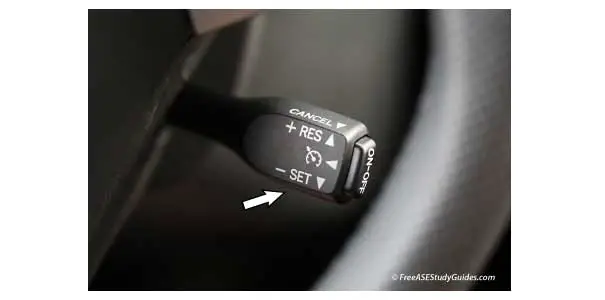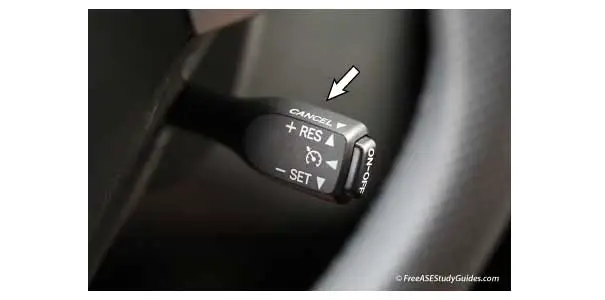Cruise Control Operation

The cruise control systems in today's cars are part of the engine management system. The control module receives a set speed from the driver's input. It uses sensors and an electronic throttle actuator to maintain this set speed. They are precise, not the vacuum-controlled systems found in older models.

An on/off switch signals the control module of the driver's intent to activate or deactivate the system. The on/off switch or the brake/cruise control switch are used to deactivate the system.

Activating the set function sets the preferred vehicle speed. The control module registers the current speed from the vehicle speed sensor. It attempts to maintain this speed until a change is desired.

The cancel function deactivates the system, and the coast function allows the vehicle to slow for upcoming traffic or turns. It's like tapping the brake pedal. It's mandatory to have two ways to deactivate a cruise control system. When the brake pedal is depressed, a set of contacts is closed in the brake switch. This informs the cruise control system of the driver's intent to slow down. After coasting or braking, the resume function resumes the speed set in the control module's memory.

The resume function resumes the set speed after pressing the brake pedal, clutch pedal, or cancel button.
Today's enhanced and adaptive cruise control systems utilize automated braking and forward-collision warning systems. They query a growing database of known speed limits and GPS tracking to maintain these limits.